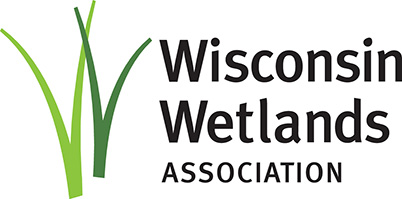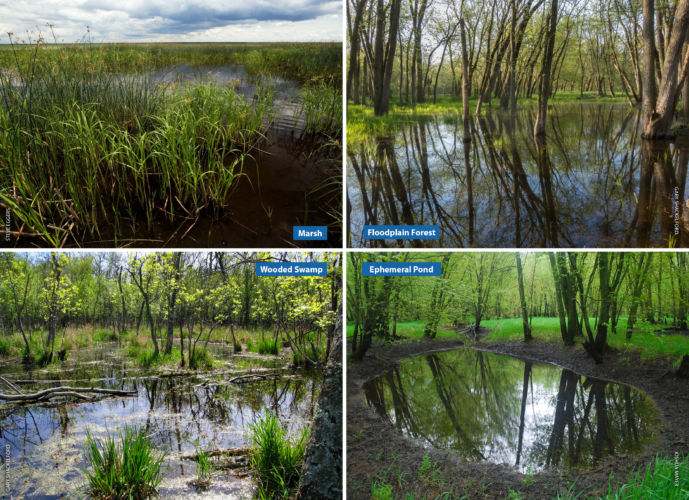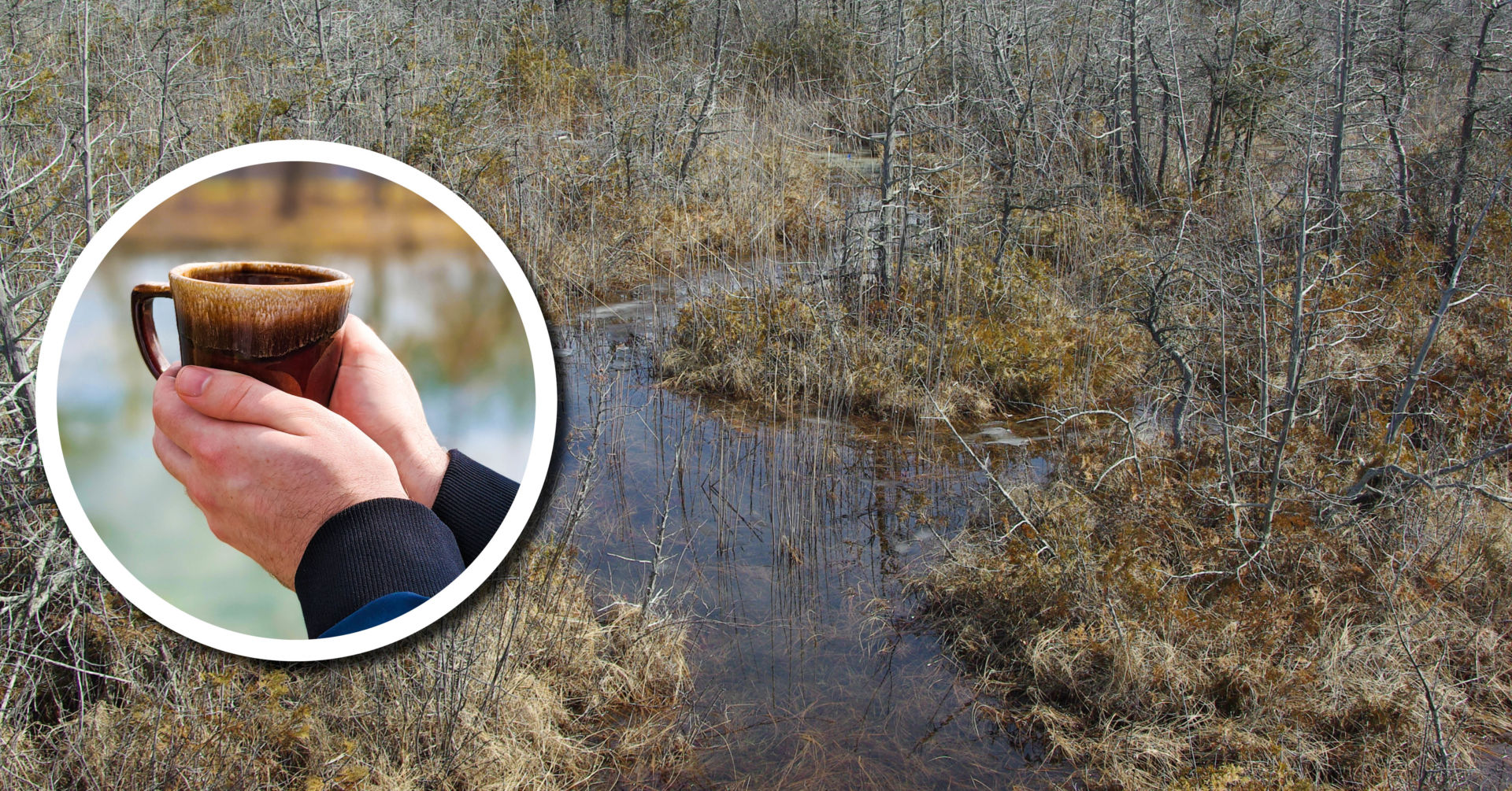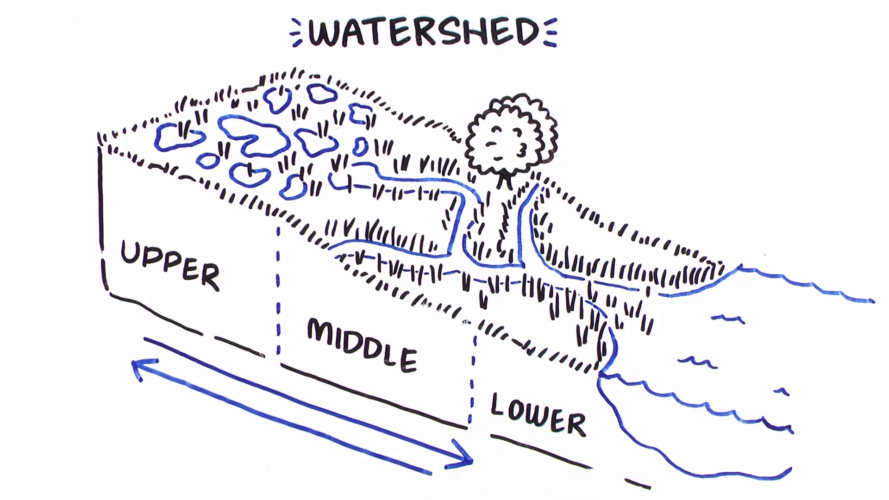Wisconsin is blessed with many kinds of wetlands. As you get out to explore this summer, you may find yourself wondering just what type of wetland you’re in! We hope this two-part feature will help you more easily identify some of Wisconsin’s common wetland types.
Wetland classification systems are based on soil type, vegetation, and hydrology (the timing, frequency, and level of flooding or soil saturation). While some classification systems divide the state’s wetlands into more than 30 types, we’ll keep our exploration here to eight broad types of wetlands (four in this issue and four in the next). Remember, most wetland areas are actually a complex of types.
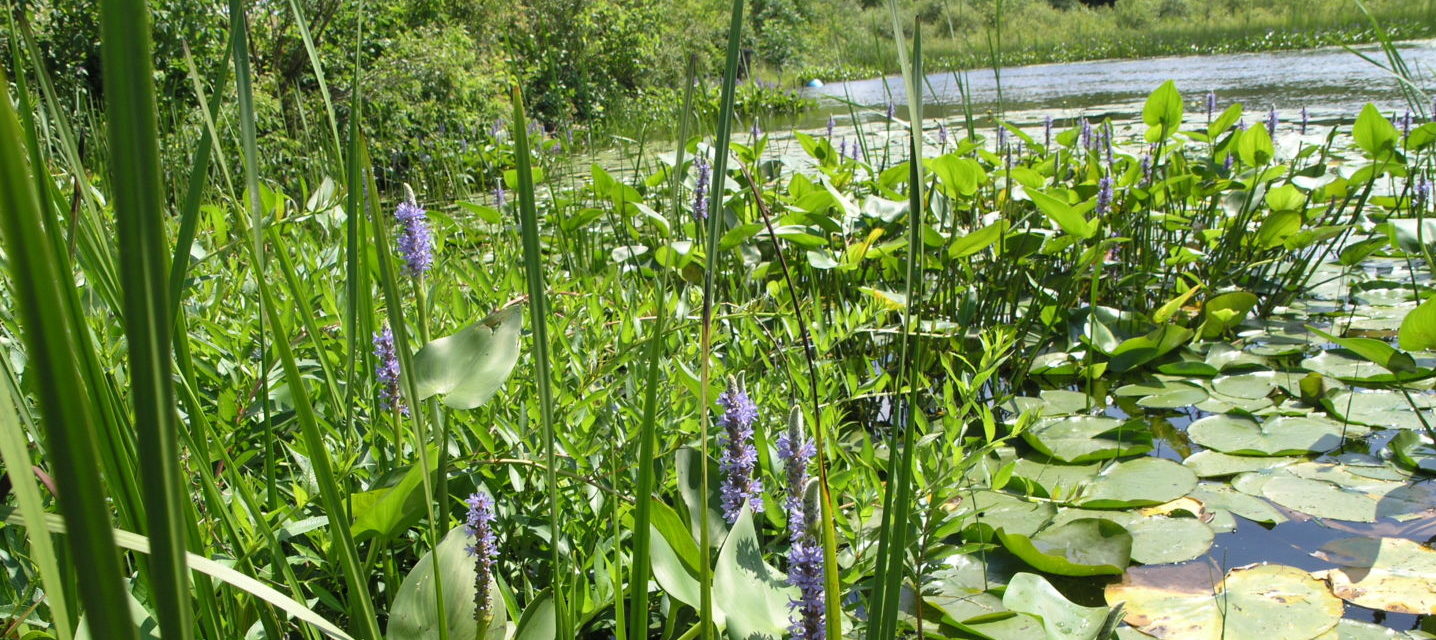
Marsh
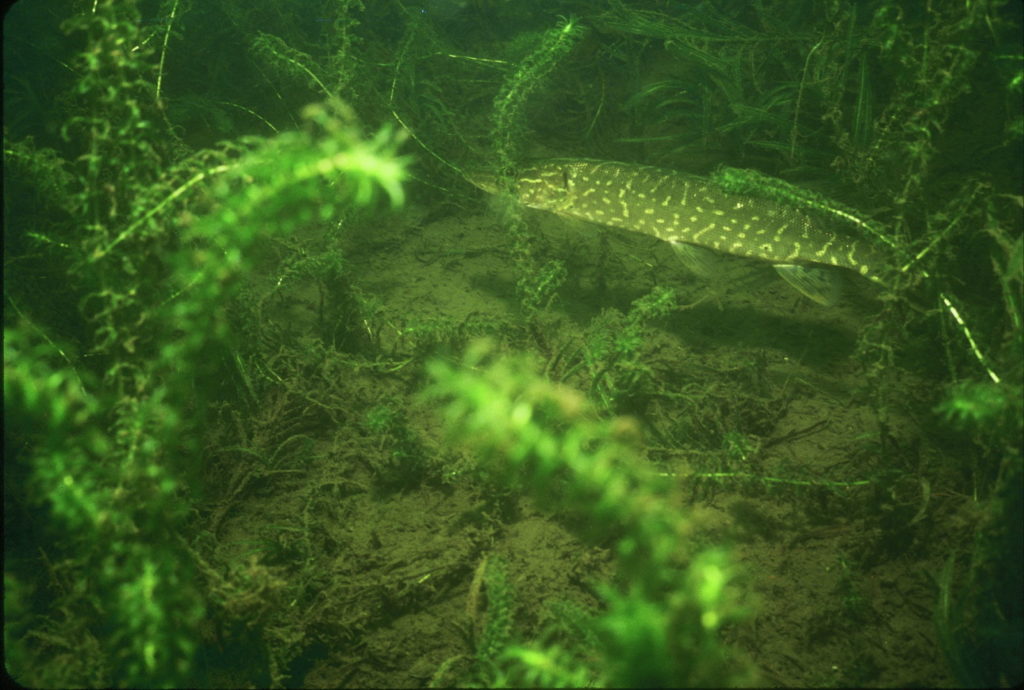
Marshes are spawning and nursery habitat for some fish species, including Northern pike. Photo by David Marshall.
Marshes are the type that most often come to mind when people hear the word “wetland.” Marshes are dominated by aquatic plants growing in water that is six inches to six feet deep. Some marshes have standing water year-round and others for only part of the year. Fluctuating water levels is the norm. Marshes can be small to very large and are found throughout Wisconsin, commonly along lakes and rivers. Shallow marshes support cattail, bulrush, lake sedges, arrowhead, and bur-reed. Deeper marshes support submerged and floating aquatic plants, including pondweeds and water lilies. Marshes are among the most productive habitats for waterfowl, other water birds, furbearers, and aquatic insects, and they provide spawning and nursery habitat for some fish species. They are important stopover sites for birds during migration because their submerged plants and aquatic insects provide an abundant food source.

Wooded swamp
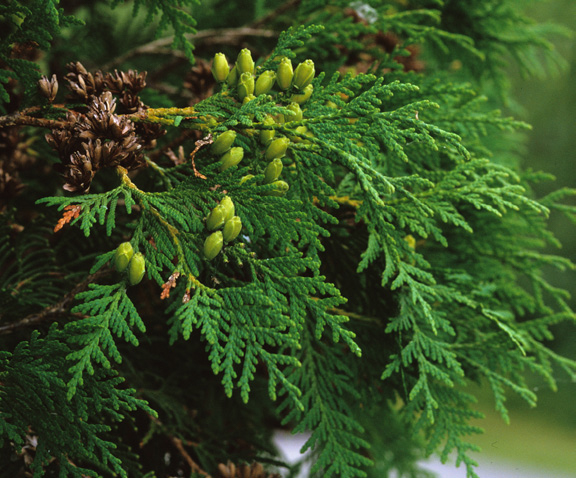
Northern white cedar can be common in lowland hardwood swamps in northern Wisconsin. Photo by Steve Eggers.
These wetlands have abundant mature trees and soils that are saturated during much of the growing season. In the spring, they may have as much as a foot of standing water. Lowland hardwood swamps are dominated by deciduous hardwood trees, including black ash, red maple, yellow birch, and silver maple. The invasive emerald ash borer beetle threatens ash trees in these swamps. Coniferous swamps are dominated by northern white cedar and/or tamarack and support abundant sphagnum moss (although not the continuous moss mat you might find in a coniferous bog). Coniferous swamps occur primarily in northern Wisconsin, although several large examples occur in the southern part of the state. Herbaceous plants in wooded swamps include royal fern, lady fern, jack-in-the-pulpit, numerous sedges, many flowering plants, and some rare orchids. Beware of poison sumac!
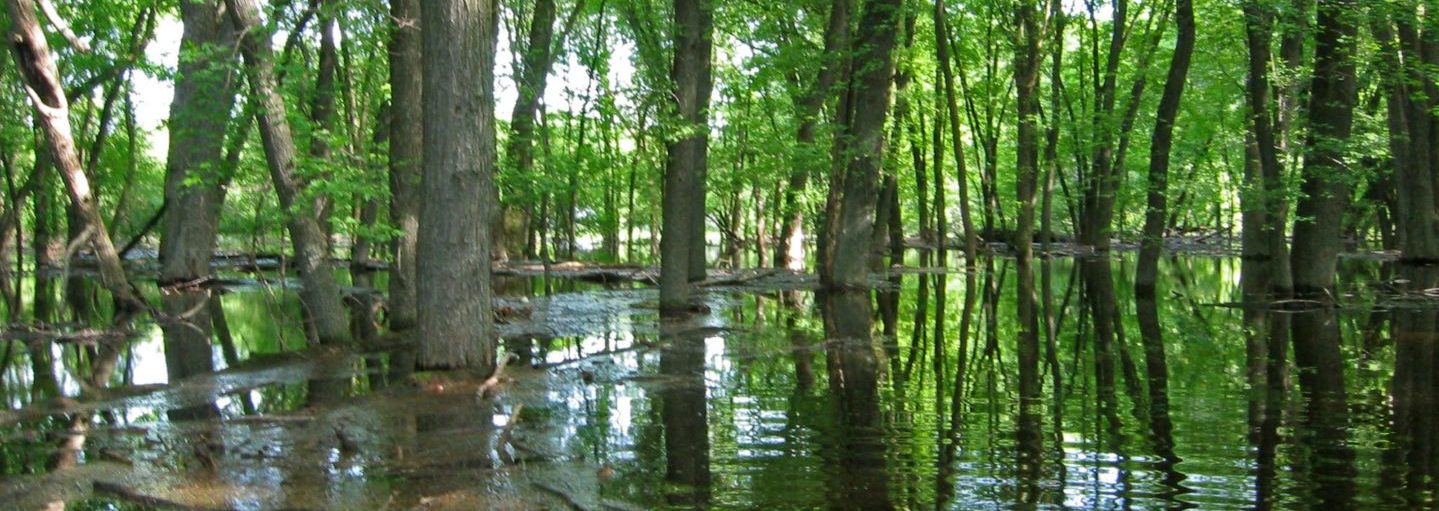
Floodplain forests
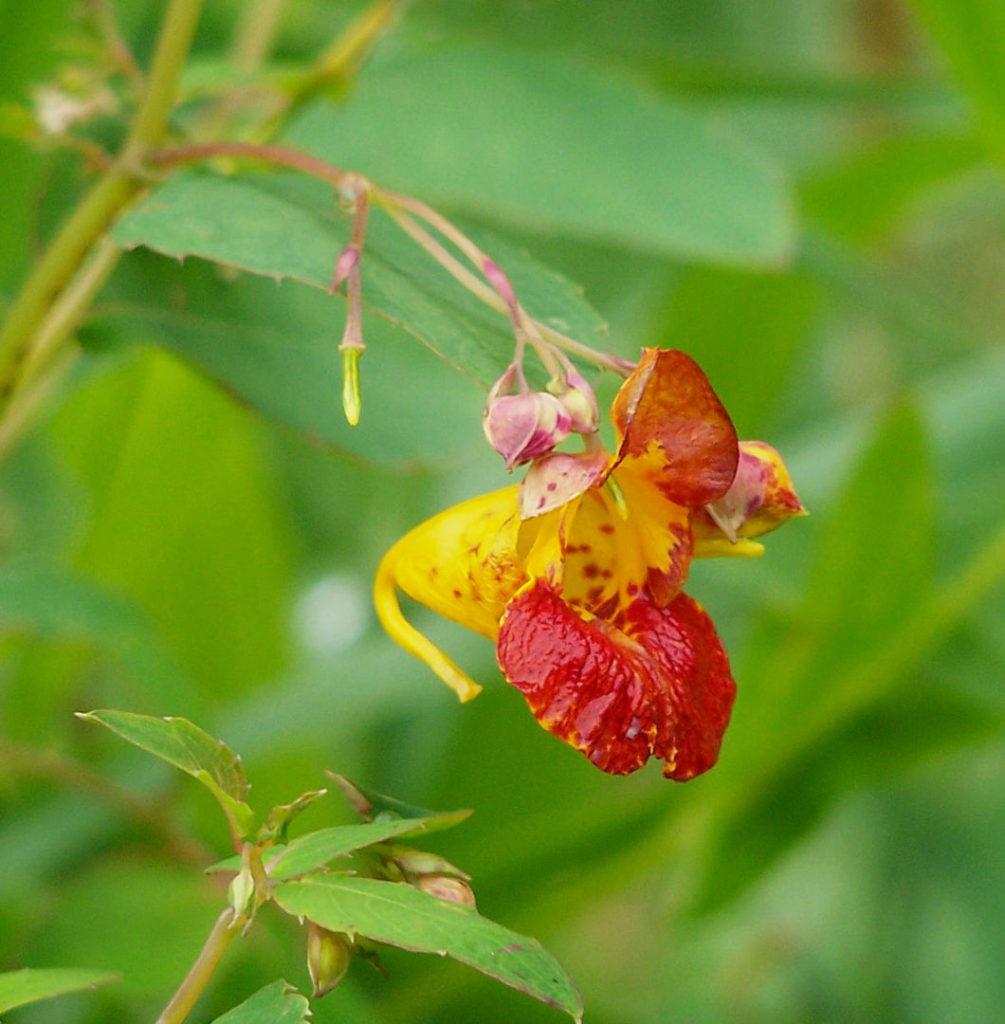
Floodplain forests like the one pictured above serve as migration corridors and support a diversity of wildlife, particularly birds. Above: Jewelweed. Photo by Kate Redmond.
Floodplain forests are wooded wetlands associated with stream and river corridors and dominated by mature, deciduous hardwood trees. During times of high water, rivers spread out into floodplain forests, inundating soils that are otherwise well-drained or even dry for much of the growing season. A characteristic feature of floodplains is the fine-grained and fertile soil deposited during flood events. Dominant trees include silver maple, green ash, river birch, eastern cottonwood, American elm, and black willow. Woody vines are more common here than in other wooded wetlands and include wild grape, Virginia creeper, and moonseed. Herbaceous plants can be sparse and include jewelweed, nettle, and some sedges. Within floodplains, ephemeral ponds, side sloughs, beaver ponds, “islands” of upland habitats, and areas of open sand provide diverse habitat for many wildlife species. During high water, these forests also provide important feeding and breeding habitat for fish.

Ephemeral ponds
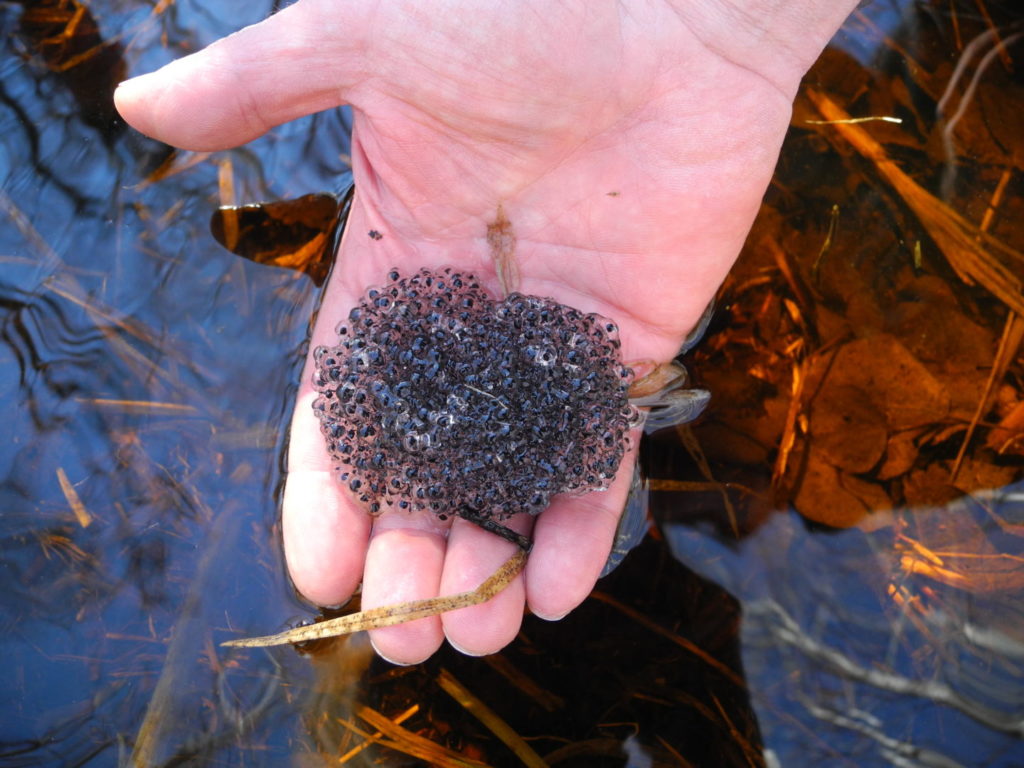
Ephemeral ponds are important breeding sites and juvenile habitat for many amphibians because they lack fish predators. Photo by Kathy Wendling.
Ephemeral ponds form in low spots on the land. They capture, store, and slowly release runoff from rain and snowmelt. They’re wet in spring and dry by late summer, and they’re often small. Together, they hold and manage a lot of water, slowing the flow and allowing the water to soak into the ground. Ephemeral ponds can provide important stopover habitat for migratory waterfowl and shorebirds because they provide protein-rich seed and insect food sources. Ephemeral ponds in forested areas are abundant in northern Wisconsin but often do not show up on wetland maps. These areas have bottomland trees (you may see water stain marks several feet up on their trunks and most trees will have shallow root systems) but few ground-layer plants. Ephemeral ponds in open and agricultural areas may have seed-rich plants like nutsedge, smartweeds, grasses, and beggerticks.
Additional photo credits: Top photo collage: Steve Eggers (marsh); Gary Shackelford (floodplain forest and wooded swamp); Joshua Mayer (ephemeral pond). In-story community type header photos: Brynda Hatch (marsh); Steve Eggers (wooded swamp); Gary Shackelford (floodplain forest); Brick Fevold (ephemeral pond).
Related content
Wetland Coffee Break: Swamp, bog, or fen? An introduction to wetland types of Wisconsin
Watch Ryan O’Connor, WDNR, give an introductory presentation on Wisconsin’s wetland types.
How to identify Wisconsin’s common wetland types, Part ll
Read the second part of this feature to learn about even more types of wetlands in Wisconsin.
